#but u kno whatever
Explore tagged Tumblr posts
Text

There are a lot of potential ways to interpret this line but I rarely see people talk about it compared to the more specific desire/knowledge she lost (fixing her hair). Personally I think it would be both funny and angsty to explore post-canon Marcille struggling with impulse control
#Like the part of her brain that says 'no wait dawg bad idea' doesn't function quite properly anymore#Actually not sure that part of her brain ever worked so great in the first place given certain. Events. whatever u kno what i mean#dunmeshi#dungeon meshi spoilers#marcille#marcille donato#dungeon meshi#aphelion.txt
3K notes
·
View notes
Text













Is a tree really any different to a balance beam? Ivan sure thinks so... 🌳🤸♀️
#ts4#sims 4#simblr#ts4 edit#fib#fib extras#byrd#pixie#ivan#it's a shame there aren't more things for kids to do#even just animations or whatever#cos they're always throwing themselves around and doing cartwheels n shit u kno#neway byrd and pixie do gymnastics together and have done for ages#😌🤸♀️
193 notes
·
View notes
Text


u & ur partner draw each other challenge 🤪
this was supposed to be a little sketch but hmm i realized during this, i need to work on my coloring 😵💫 it never ends LOL ANATOMY PERSPECTIVE COLORS i feel like i can maybeeee paint a lil better but non-painty coloring is HARD DAM i put this pic thru like 3 filters on my phone cuz the og kinda sucked LMFAO my fault 😮💨 i would draw sukuna soo pretty like a bishie bl protag HEH 😏 and i think sukuna would be pretty good at drawing too i made that up in my head in canon he alr recites poetry so its similar methinks. he would draw u lovely in yamato-e style LMFAOIWJEJSJSJ aaaand check out the creamy crunchy cameo

crunchy is def a mamas boy he loves me but i think creamy might like sukuna more,,, i think she likes men LOL she sort of likes my bf n my dad so 🤔 closeup of bishie bl protag sukuna:

ugh the lips... 👁️👄👁️ i love him bye
#.........#이 지랄같은 인생#i hijacked this tag to include all my recent me x chara art HEH#my cats r bigger rhan that i kinda fucked up the scale lol#and the mug lmfao i made that too small hahaha scale idk her 🤷🏻♀️#ALSO THE MUG & GLASS!!! THATS PART OF MY VINTAGE CORELLE FOREVER YOURS SET#U KNO WITH THE LEAD PAINT LMFAO FUCK#i have rhe plates b bowls too lmfao rip totally forgot abt lead paint when i bought those 👎🏻👎🏻👎🏻👎🏻 they r rly cute tho 😭😭😭😭😭#i was trying to do more anatomy studies w this i had sm diagrams of muscles n body builder ref pics open lol but idek if i got the shit#right ahhh also it looks kinda. stiff w all the muscle details like this was a study sort of so ok whatever but nxt time i think#gonna make it less detailed / ripped looking.. what kind of workouts was he doing in the heian era to GET SO BUFF I WANNA KNO
72 notes
·
View notes
Text



redid that one cat bump thing & also im trying to learn how to color. OK goodbye no one will see me for the next 5 hours im gonna play monster hunter 👍
ALSO some sketches. OKAY GOODBT




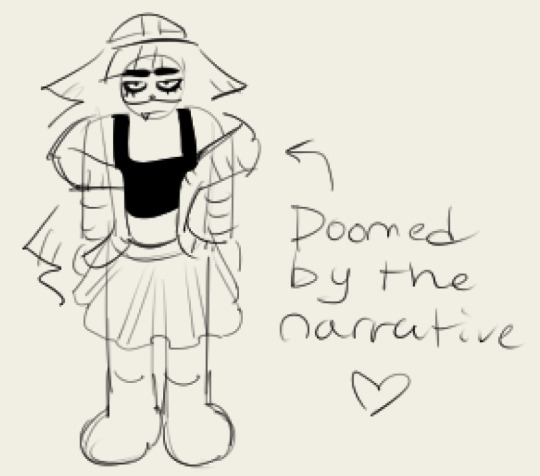




ALSO. HOLLY JAY AND LION ?

#mel art#murder drones#should i tag them!? this is fairly shitty...#AH whatever#serial designation v#serial designation n#uzi doorman#murder drones uzi#murder drones n#murder drones v#GUH i wish they didnt have so many friggin tags!!!!!!!!!!!#im so fucing scared that One doodle is gonna be percieved as shippy#likw dont get me wrong they can kiss if you want them to Go ahead its awesome live your truth#but I. think theure ♦️#if you know u kno#BUT THATS UP 4 INTERP the doodle in question was inspod by a funny dirkjake concept iykyk so if folks see it as romantic Ah well
299 notes
·
View notes
Text





shackles n chains n shackles n chains
#sonic the hedgehog#sonic fusion#chains the hybrid#knuckles the echidna#shadow the hedgehog#e-123 omega#chao#shadow chao#rusty the chao#GUYS I DON'T KNOW HOW ELSE TO SHIP TAG THIS. UM. my apolocheese if taggin all these is bad etiquette or whatever#sonknux#sonadow#sonknuxadow#shadomega#knuxomega#knuxadomega#sonknuxshadomega#<- FOURTH ONE BARELY EXISTS AND THE LAST THREE DEFINITELY DONT BUT IM TAGGING THEM ANYWAY LMAO!!!!! IM ON RAREPAIR LEVELS U DONT EVEN KNO#sonchains#chainsomega#sonchainsomega#<- literally just organization for myself these are even less real#fanart#ocs#digital#deidrawing
124 notes
·
View notes
Text

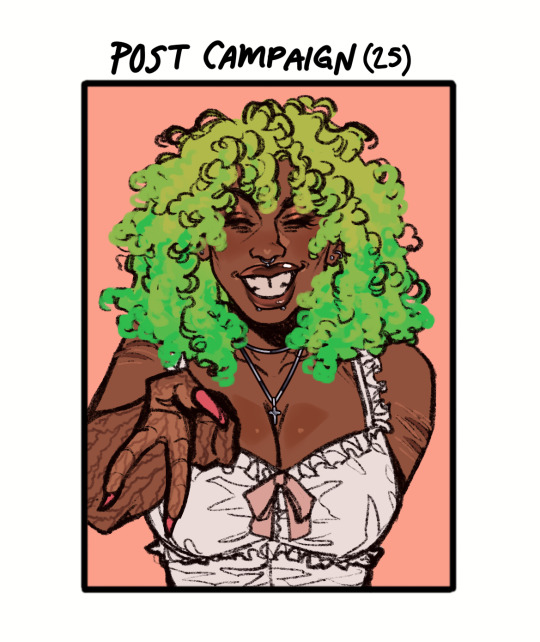
george timeline… they’re so slayers i love them sm (they/bun/she for george pleek ❤️)
#illustration#digital art#oc art#my art#original character#sev ocs#there was supposed to be lore text images to go with these#but i couldn’t fit their transcripts in the alt text thing here either!#so i was like erm. whatever i figured ppl wouldn’t wanna read all that anyways#if u rly wanna kno what was going on during each of these points in her life just ask
320 notes
·
View notes
Text

studies from episode 7.
#iwtv#claudia iwtv#lestat de lioncourt#louis de pointe du lac#interview with the vampire#tvc#the vampire chronicles#claudia de pointe du lac#claudia de lioncourt#the vampire lestat#the vampire louis#my art#did u kno ive thought this whole time that tumblr only shows your work in the first 5 tags. i am a buffoon#anyway i did these without thinking abt comp when i posted em so. plum. whatever#ANYWAY HOW ABOUT THAT S2 TRAILER HUH
89 notes
·
View notes
Text






lalalal imade this
#ahh u gay 🤣🤣🤣🤣#adinda's blog#dave mustaine#david ellefson#nick menza#marty friedman#megadeth#shitpost#twinks#whatever whatever#idont kno#twitter#SupSlur#ellefstaine
30 notes
·
View notes
Note
Pebbles hating on Sun? I'm here for it. I love your version of Suns so much because it just encapsulates all their flaws that people often ignore. Is this my Pebbles bias speaking? Yes absolutely. Nobody LETS Pebbles be angry towards Suns when he has every right to. They just let the anger be outweighed or completely ignored in the favor of Pebbles own screwups.
I want to see Pebbles come into his own, decide he has worth as a living person, and there is value in living. Then, as someone who values his OWN worth, realize that Suns was toxic. That their friendship and mentorship was toxic. Let him be angry and let him cut that out of his life so he can focus on righting his own wrongs (which Pebbles does canonically anyways).
Realistically, Sun's and Pebble's friendship would never be the same. Even if Pebbles forgave Suns, I can't see their relationship being anything but strained. Moon and Pebble's situation cannot be compared to this since Moon is A. extremely forgiving/patient and B. her collapse was an accident on Pebble's part. She was angry yes but chose to rekindle her relationship with Pebbles in the end.
Five Pebbles is a completely different person from Moon and has a right to handle his mentorship with Suns in HIS way. So yeah, I cannot see off the string Pebbles doing anything but trying to heal from what Suns did to him (while also dealing with his own guilt).



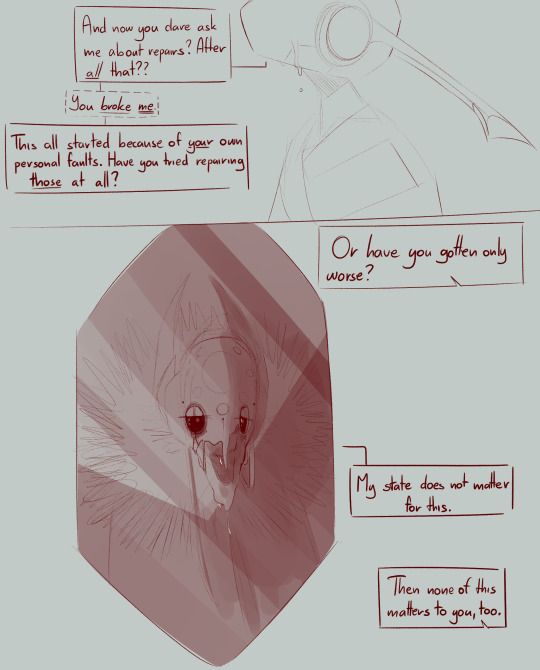
here's a treat cuz oh i Know you are here for this, every time my version of these two are mentioned you come runnin jgksdlmcklsdm
#spot says stuff#rain world#rw#// body horror //#mr. decay#← for peeps to blacklist Suns' decayed design cuz o boye i kno it nasty. just in case. i aint gon make u look at this shit#anyway i hope this cements in the fact that id absolutely hate drawing these two in a romantic sense. i find the idea absolutely disgusting#not at u asker n i wont namedrop the reason for me sayin this cuz im not mean like that but there Is a reason n it made me really angry#i respect the shippers yall do yall but the moment u try to point the shit at me like that in Whatever small portion even though im very-#-clear about not likin iterator ships i Will be gettin angry. this is a warning. second time n im blocking
196 notes
·
View notes
Text
RODBT therapist @ the group: Does anyone have any examples of situations that generated complex emotions?
Me: Well... recently, scintists identified the remains of James Fitzjames who died in the Franklin expedition for the Northwest Passage like 176 years ago... it made me feel a lot of things...
#also i need u to kno that i was wearing cat ears and had drawn a cat nose and whiskers on my face#bc our homework from last week was to engage in novel and silly behavior and i thought it would get me silly points#they had to try to figure out what compex emotions i was feeling and landed on: sadness and compassion#bc the news made me really uncomfortable. which is y i didnt rb any of the posts going around#bc something about knowing this person had been identified along with the idea that there was no one who actually knew him#to take comfort in having found him is so eerie and sad. and like of course there r ppl who kno him as a historical figure but thats not#really knowing someone. so its like celebrating for the echo of a person. and there's something sad and haunting about that#the existential horror of being only remembered by the physical effects you left on the world. by which i mean ur writing and the actions u#proformed in order to make other ppl think u were worth writing about for whatever reason#i dunno. i suppose it should b a happy thing but i guess it just makes me feel really sad. not in a bad way exactly.#just. i dunno. its weird and sad#unrelated#and then theres the additonal thing of ppl only knowing this historical figure thru the show
26 notes
·
View notes
Note
bailey what’s ur favorite piercing?
I am a firm believer that any type of nose ring makes anyone like 60% hotter.
#however i dont fuck with those spikey nose rings in like neon colors or black#but that is just a personal thing do whatever makes you happy u kno
15 notes
·
View notes
Text
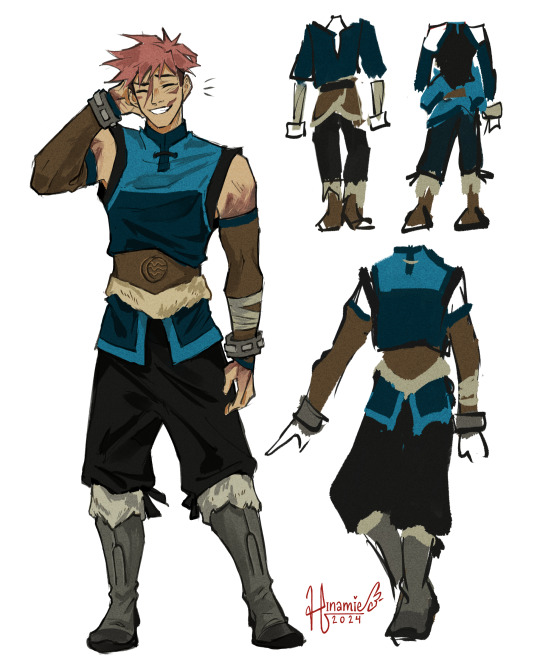
took 3 tries but i think i am finally free of korra plagiarism in yuuji's water tribe design
jjk atla!au with @philosophiums
#my art#jujutsu kaisen#jjk#itadori yuuji#yuuji#fanart#jjk fanart#jjk atla!au#lmhs#timelapse#atla!au: design#atla!au: art#this au's power....literally ws like I Do Not Have Time To Draw today and yet . here he is#I think water tribe clothing leans symmetrical thus me fiddling w his lower hem a bunch ghgjhfgsdf#i love u asymmetry but we must make sacrifices ive spent too long bashing my head in over how to fix this design#i simply could not in good conscience have him cosplaying korra . i think their time in th water tribe is too important#n when the time comes fr me to illustrate fr th later chapters i want to . u kno.#actually be Happy with th design GJHFGS#and i am !!!! finally !!!!#i think i managed 2 accomplish my goal of keeping his short sleeves n armbands while Not making it look like walmart korra#long suffering sigh yuuji Why Do You Fight Back :(#megumi voice whatever !!!!#my un-korrification mission ws a success in my eyes and thats all that matters
904 notes
·
View notes
Text
shouldn't the Johnny thing have clued dennis into the fact that mac likes it MORE when guys treat him like shit?...like why the fuck did he set mac up with a "nice guy" for his date if he wanted it to actually go somewhere LMAO
#i thought u were mr dossier#mr 'i know you better than you know yourself'#so curious to see if this was 1. a simple oversight 2. dennis being oblivious 3. dennis knows this and thats WHY he set mac up w a nice guy#i mean i understand its supposed to be meta#like 'oh well mac doesnt want a nice respectable guy- he wants dennis'#its the set up or whatever#but i wanna kno more abt the in character aspects of this lmao...#cuz i could understand it if this was pre-johnny ... but now dennis most certainly knows so wtf LOL#like despite my locust brain i want dennis to just be that stupid#KJDRGNKJERNFK
46 notes
·
View notes
Text


got to see the total eclipse in person!!! heres some art commemorating that! cuz getting to watch 2 celestial bodies make out sloppy style was inspiring what can i say, also it was just rlly beautiful and cool and amazing to get to see ghg- but also! its like?? basically the moon finally getting the suns undivided attention... and thats got some vibes to it,, some energies... that i could not ignore lol.
#original art#eclipse#solar eclipse 2024#total eclipse#doodles#original#artists on tumblr#ok sorry these r probably kinda sloppy looking. 1 paintings very difficult.#and 2. my brain wouldnt let me work on other shit before finishing these but i have other shit i NEED TO DO#so im deciding they r now finished i dont wanna spend any more time on them lol#i think they turned out ok tho#i recorded the process of me drawing them too so#there might..be a speedpaint. possibly#last time i said a picture would get a speedpaint was like 2 years ago and it didnt get one cuz my computer hated me lol#but! i have a new computer now...#if i find the time / energy to make that speedpaint.. then there might be a speedpaint#we shall see lol#i kno the height difference i gave them isnt acurate at all to actual sizes. the sun is bigger#but... this is what i wanted to draw gghgh-#if it makes u feel any better i did come up w a headcanon while drawing that they can just shapeshift freely n be whatever heights they wan#right now the moons just taller#cuz i said so#also sorry they kinda resemble my tak and gaz a bit… that wasn’t intentional… I just wanted the moon to be gothy and the sun be spiky#but#they kinda do look a bit like them ghg-
26 notes
·
View notes
Text
re9 where it's ada as the main character and she's tasked with taking down the bsaa and she exposes them for using BOWs and also jill helps her because jill is frustrated with chris and the bsaa and claire is also there because she stumbled upon the same information while doing her own personal investigation
#speakerphone!#u kno me. throwing shit at the board to see what sticks#👀👀👀#you know what. im 99% sure this is better than whatever capcom puts out
22 notes
·
View notes
Text
BOOTUNS
they are incredibly basic but an absolute blast to make, so now i have roughly 300 of them lmao
behold my shitty display for the guerilla market im gonna attempt to sell the eighty million crafts i do to keep brain weasels at bay
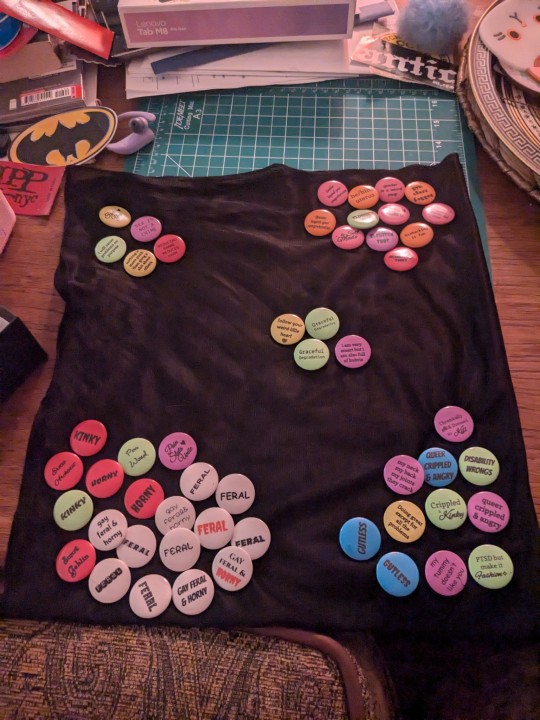




and then the section i call "u can sure tell what my tester word was and my gf is to blame"
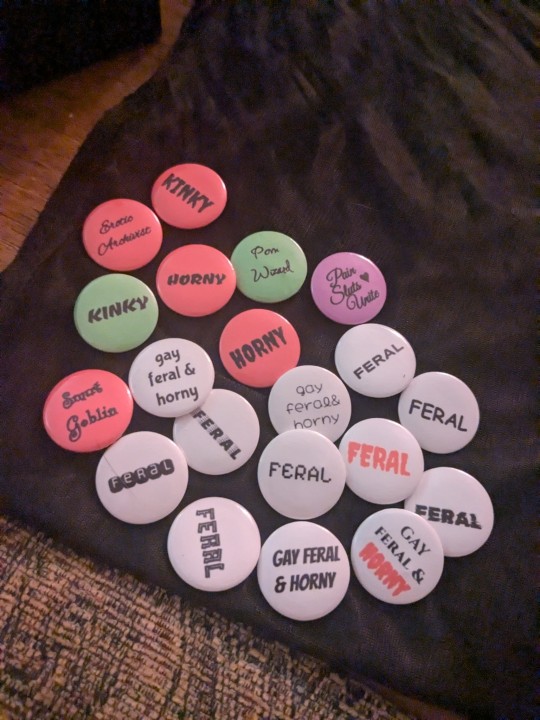
ne wai, if i manage to actually make a substantial amount from the market tomorrow i am absolutely going to basically immediately turn around and buy stuff for making more, including that holo film for em because SPORKLY BOOTUNS >:3c
#mochi rambles#mochi crafts#which#if anyone on the interwebs WANTS some dm me and we can work something out#they are not gonna be expensive but i will absolutely mail u a fistful of shitty buttons for like 5 bucks or whatever#i am making them to MAKE things more than to make a ton of money#but#ya kno#if my crafting is self sustainable#that would be Ideal
17 notes
·
View notes